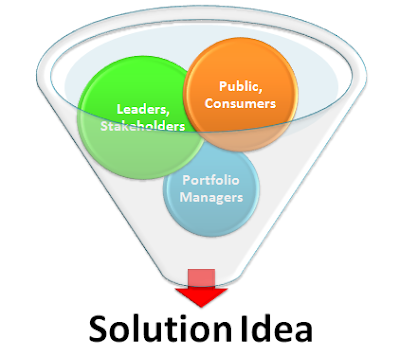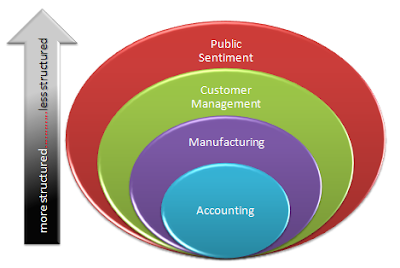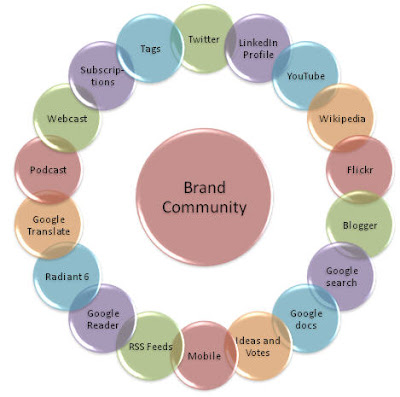Customer Relationship Management (CRM) is the organization, business process, and technology solution around how to handle customer interactions including sales and marketing functions and integrations with finance, supply chain, and customer service.
Before getting started with a CRM approach, The Solutionist assures alignment with overall
Enterprise Architecture Master Plan.
Note: this posting is not about project management but rather leadership of solution development. Refer to "A Simple Plan" on ensuring project management services are in place.
Solution Identification and Prioritization: The scope of CRM can be very broad or very narrow, ranging from full sales force, campaign, and customer service automation and integration with supply chain and finance functions to a small utility to help teams manage their leads or service calls. It is important to identify the scope of the solution that is in line with the EA Master Plan, business objectives, and budget.
As with many inititaves, there is a HIGH RATE OF FAILURE for CRM implementations because scope, change management, and prioritization are not managed effectively.
Engage with sponsors, stakeholders and enterprise architects in a discovery session to explore the following subject areas. Determine the importance, depth, integration requirements, and feasibility of implementing each function. Create a
business case and
solution roadmap, ensuring agreement and sign off by the sponsor team:
click on chart to enlarge
- Marketing life cycle (consumers, trends, brands, campaigns, leads, advertising, promotions, merchandising, activation)
- Account management life cycle (lead conversion, accounts, contacts, customer/product mix)
- Sales life cycle (opportunities, products, pricing, quotes, sales orders, closing)
- Customer service (calls, solutions, tickets, self-service, feedback)
- Integrations (supply chain, order management, finance, top line reporting)
- Consumer and Customer Interactions (social media, key messages, online targeting, ideas)
- Insights and Analytics (team productivity, segmentation for products and customers, insights and analytics of internal and external trends)
Solution Selection Scorecard: Compare alternatives using a weighted scorecard. In a spreadsheet, list features down the left with the importance of each, alternatives across the top with a rating of how they satisfy each feature. Importance X Rating = Score. Make sure one of the alternatives is to "do nothing".
click on chart to enlarge
Features: (list in left column)
- Change expectations: Are we foundationally changing the way we sell, market, or interact with customers and consumers? Or enhance the existing process with modern tools and technology? This is critical topic as it may require significant change management expertise to actually effect the change.
- Sophistication, mix, and diversity of the customers and sales teams: Are the customers and sales team highly automated in one region and less automated in others? This can depend on industry, geography, and culture.
- Importance of integration or uniformity across geographies, languages, currencies, lines of business. Must all employees use the same processes, methods and procedures? Where can there be differences? What must be common across the region? How do results roll up for top-line reporting?
- Timeline for going live: do you have 18 months or 4 weeks to implement?
- Types of products and services being sold: Are these complex materials with intricate dependencies? produce to order? services? off the shelf? Are there integration requirements with the supply chain material master? Raw materials, finished goods? Packaging? Artwork? Perishable? Seasonal?
- Generally accepted methods for selling and pricing in this industry and geography. Is it ok to have localized business practices or is there a need for more common practices? To what degree do local and regional preferences need to be managed? How are customers and accounts awarded to sales teams?
- Geography and territory of sales team (face to face, phones, Internet, appointments, cold calls). How exactly do the teams operate? Home offices? Site visits to retail stores, institutions, or homes? Travel? Presentations? Email? Is language, distance, online or cell phone access a barrier?
- Marketing channels and distribution model - how are products and product information actually getting in front of consumers and customers? Are sales to a retailer, wholesaler or distributor, on routes, at special events, through the Internet or phone? Inbound? Outbound?
- Consumer insights - is there a need for subscription services and business intelligence to analyze and deliver insights? How will this information be distributed to users?
- Marketing, advertising, and brand information - how is the sales team being trained on brands and advertising campaigns? How are regional marketing campaigns being executed and funded? What type of activation programs are being executed? What type of merchandising is needed?
- Consumers and leads - how are leads discovered and managed? Web? Inbound calls? Conferences and conventions? How are leads rated, routed, and converted to accounts?
Alternatives: (list across the top)
Build vs. Buy - start by assuming a "buy + some modifications and integrations" solution. This is usually the middle ground alternative. Most organizations believe their way of doing things is too unique and critical to fit into a pre-configured solution. Indeed it may be more expensive to change the behaviors to fit the system than the converse. The choice to "do nothing" is not always a bad choice! Alternatives are typically:
- Do Nothing
- Buy + limited configuration changes
- Buy + some modifications
- Buy + modifications and integration with finance, supply chain, others
- Build stand alone solution
- Build solution integrated with finance, supply chain, others
Platform Choices:
Whether a solution is purchased or built, alternative is selected is dependent on the EA Master Plan, the budget, and the features required. Additional considerations for selecting a platform:
- Appetite for implementing subscription-based, software as a service (SaaS), cloud computing
- Existing finance and supply chain systems, requirements for integration
- Existing licensing and strategic sourcing commitments
- Ability to build and support custom solutions
Vendor Choices:
Start with the obvious. If you are determining a solution for a large enterprise, there may already be licensing or a foundational system in place that make sense from a budget or integration perspective. If the solution is for a smaller organization, consider a subscription-based, software as a service (SaaS) solution.
- Oracle
- SAP
- salesforce.com
- Microsoft
- Amdocs
- Others
Expected Long Term Value to the Enterprise:
Build and maintain periodic updates to a fact-based business case including a detailed ROI (return on investment) and TCO (total cost of ownership). Focus on the cost of "doing nothing", especially alignment with business objectives and competition.
Costs
- Project and change management (communication, training, business discipline, process change)
- Licensing and/or infrastructure
- Development and configuration
- Long term support
Benefits
- Increased sales (# closes, increased quality with customers, shorter cycles)
- Ability to enter new markets, introduce new products or promotions
- Competitive advantage
- Increased customer and consumer satisfaction
- Increased efficiencies
- Ability to gain insight on effectiveness of sales practices and marketing campaigns
- Alignment with business objectives
Risks
- Likelihood cost / benefit predictions are accurate. Try not to understate costs and overstate benefits.
- What could go wrong
- Continuity and contingency plans



















